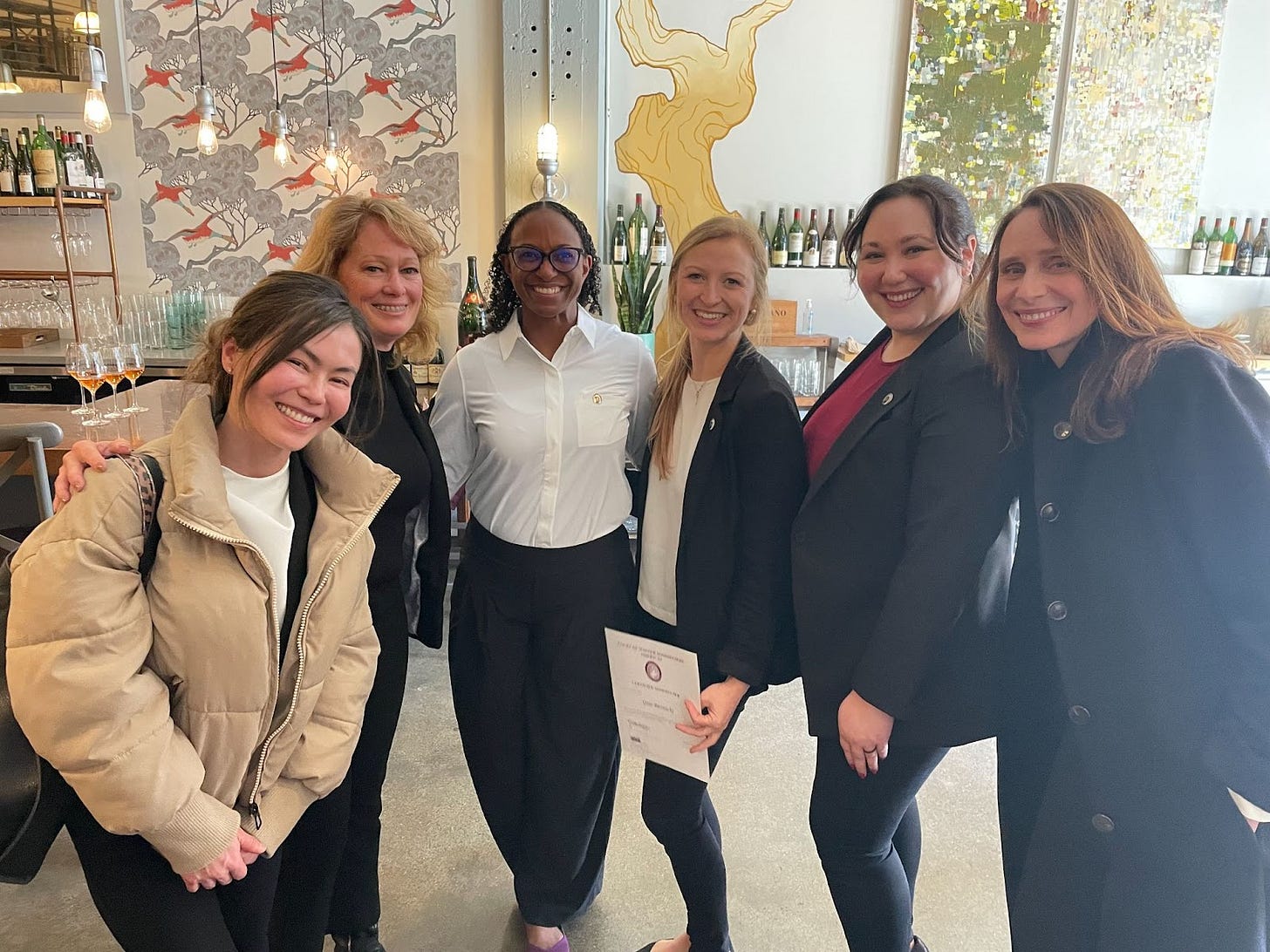Round Three of the "Wine Conversations" series kicked off last week!
started us off with her question, and an illuminating anecdote about an early interaction with a Burgundian winemaker. went further into the etymology and mythology surrounding the use of “Old World” and “New World” descriptors.So the question is now mine to answer: Old World vs New World - a relevant distinction or an outdated classification?

The Sommelier’s Answer
In December 2023, the Court of Master Sommeliers announced that it would officially remove the terms “Old World” and “New World” from all tasting grids used in exam settings, effective in 2024. While no points will be deducted from sommeliers who choose to use the terms in an exam, no points would count if the terms happen to be included in a blind tasting exam. At the Master Sommelier level, candidates have already been training for a verbal blind tasting exam for at least five years (if not much longer), so this covers the point that old habits die hard.
Which leads me to my point.
If the Court of Master Sommeliers, an institution notoriously slow to adapt to the rapidly changing world of beverage, has made the decision to eliminate the terms from the official exam vocabulary, they probably shouldn’t be in my own descriptions.
This is more than just a technical point. Yes, I am currently studying for upper level CMS exams, and it would behoove me to get practice in eliminating the outdated language in an effort to focus on accruing points by calling more specific details about six wines in 25 minutes. But it also goes to show a sensitivity to a world - and an industry - that has historically been unkind to non-European people.

Maria’s Answer
In the early days of the pandemic, I stumbled on the Clubhouse app and started to engage in great conversations about wine with established sommeliers, wine influencers, burgeoning wine enthusiasts like myself, and almost anyone in between. Most of the people that I met were BIPOC, and I found myself naturally gravitating towards Spanish-speaking spaces.
(Side Note: I am second generation Mexican-American, but I did not grow up in a Spanish speaking home. Hablo bastante bien, y sólo hablo en español cuándo estoy trabajando en cocinas profesionales, pero comprendo más que hablo porque mi esposo necesita practicar con Duolingo. I have found my relationship to this part of my culture to be conflicting because I am a fair-skinned mixed woman with a lot of privilege and a fervent desire to understand my cultural heritage.)
In these Clubhouse conversations, I found that for many wine professionals who speak more than one language, “Old World” and “New World” brings up a lot of hurt around colonization, the erasure of tradition, and the constant “othering” of BIPOC people.
These conversations that I was having four or five years ago also started to explore the idea of expanded tasting notes that would encompass a less Eurocentric taste profile. Some people grew up around tart calamansi fruit instead of lemons or limes. Others have never tasted a gooseberry or a fresh red currant in their lives. How are we as somms supposed to gain points when everyone’s base of knowledge is so varied?
Final Thoughts
Now that “Old World” and “New World” are no longer in the vocabularies of organizations like the Court, it only seems fair to include additional acceptable tasting notes into the lexicon of blind tasting exams. Having removed the most problematic language already, a more perfect examining body would see that calamansi is basically a more tart combination of lemon and lime, which points toward a more tart wine. (If a candidate called calamansi on the palate, then came up with a final conclusion of Gewürztraminer or Viognier instead of Riesling or Sauvignon Blanc, then I’d worry about the appropriate use of the tasting note.)
At a time when very few BIPOC sommeliers have passed one of the most difficult exams in the world (some of which is partly due to previous accessibility issues), the post-scandal Court of Master Sommeliers is working overtime to atone for previous mistakes and make wine exams more accessible to people from varying backgrounds. There’s still a lot that I would want to see included in the exam process when I (hopefully) become a Master Sommelier myself. We have a long, long way to go in terms of representation in the wine world, but the elimination of these outdated terms from exams is a step in the right direction. Consider this a “yes, and” statement: Yes, the terms are outdated, and we as an industry can continue to improve our language around blind tasting.
I’m passing the baton to
, who will contribute her thoughts on this topic next! But first, what are your thoughts on the usage of “Old World” and “New World”? Let’s start the chat in the comments section, free for all!






From a wine enthusiast, not a sommelier or expert by any means: This was really illuminating and makes me want to read more into the etymology of the old classifications and history of varietals around the world🍷🥂
Whenever someone says "citrus and gooseberry" in my head I'm always like "so calamansi, then." And the funniest part is: Americans *probably* know what calamansi is better than gooseberry! Trader Joe's sells calamansi sorbet. I've never seen a single gooseberry anything, in my 40+ years of life, that wasn't a direct import from Europe. And somehow gooseberry is still one of the go-to flavor descriptors of wine. I can't imagine why.... ;)